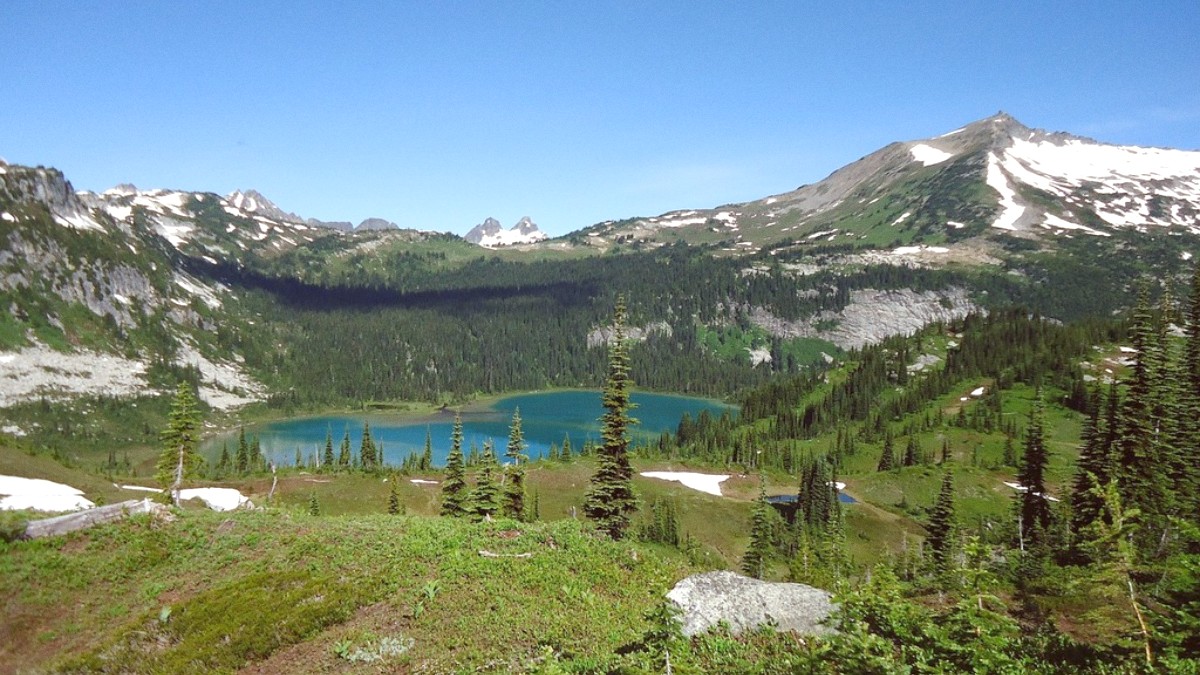
Washington, USA
Peaks here stand over 9,000 feet, with Mount Shuksan and Boston Peak reaching impressive heights. Glaciers, over 300 of them, sculpt the landscape, feeding a network of rivers and lakes. The Skagit River, a main artery, flows through the park and eventually reaches Puget Sound. This river hosts one of the largest salmon runs in the Lower 48 states, a part of the ecosystem. Deep, narrow valleys define the landscape, carved by ancient glaciers and flowing rivers. Lake Chelan, a deep, natural lake stretching over 50 miles, marks the southern edge of the park complex and presents a different type of lake experience.
The landscape shows millions of years of tectonic activity, volcanic eruptions, and glacial cycles. These forces created the rugged peaks, deep valleys, and numerous lakes seen today. Glaciers continue to sculpt the mountains, presenting a dynamic geological story.
Tribes like the Upper Skagit, Sauk-Suiattle, Nlaka'pamux, and Chelan people traversed these valleys and passes. They hunted, fished, gathered resources, and engaged in trade. Their intimate knowledge of the land, its seasons, and its bounty grew over time. Signs of their presence, like ancient trade routes and rock shelters, highlight their deep connection with this land. Their traditional ecological knowledge guided environmental care, supporting sustainability for generations. Their stories and cultural practices remain a part of the North Cascades' heritage.
European American trappers and prospectors arrived in the 19th century, drawn by furs and minerals. Initial exploration proved difficult due to the rugged terrain. Later, logging and hydroelectric power development became major industries.
The Skagit River Hydroelectric Project, built by Seattle City Light in the early 20th century, created three large reservoirs—Gorge, Diablo, and Ross Lakes. These dams, engineering marvels of their time, supply power to Seattle and changed the natural river flow. This industrial development also brought roads and infrastructure into the wilderness.
Conservation efforts gained momentum. People recognized the special nature of the North Cascades and worried about uncontrolled development.
Environmental advocates campaigned for protection, urging preservation of this unique wilderness.
North Cascades National Park designation occurred in 1968. This preserved a large part of the wilderness for future generations.
The park's establishment balanced conservation with existing hydroelectric projects.
This history, from ancient glaciers to modern power generation and conservation, defines the North Cascades.
The North Cascades present diverse experiences. This snapshot offers a quick look at what to plan for your trip.
The best time for a visit is summer, from mid-June to mid-September. Trails are mostly snow-free, and the North Cascades Highway (SR 20) is open, reaching the park's core. This period brings warm, dry weather, ideal for hiking, backpacking, and paddling. Longer daylight hours permit extended exploration. However, expect larger crowds and competition for accommodations and backcountry permits during this peak season.
Trip cost for the North Cascades varies based on your style. A budget traveler, camping and self-preparing meals, might spend $50-100 daily. A mid-range traveler, combining motels with casual dining, could anticipate $150-300 daily. For a luxury experience, choosing lodges and fine dining, costs exceed $400 daily. The park itself has no entrance fee, but transportation, especially fuel, makes up a major cost. Carrying cash for smaller, remote vendors is a good idea.
For detailed budgeting, refer to Section 2: Essential Planning Information.
Packing for the North Cascades means preparing for variable mountain weather. Layers are always important, even in summer. Included are further insights into your journey.
Moisture-wicking Base layers, an insulating mid-layer (fleece or puffy jacket), and a waterproof, windproof outer shell are critical. Sturdy hiking boots are necessary for trails. Sun protection, Insect repellent, and a comprehensive First-aid kit belong in your pack. For backcountry, a Water filter and bear canister make sense.
Access to the North Cascades often means flying into Seattle-Tacoma International Airport (SEA), about 2.5-3 hours away by car. Bellingham International Airport (BLI) makes another option, closer at 1.5-2 hours. A rental car is nearly necessary for park exploration, as public transportation within the complex is very limited. State Route 20 closure is seasonal, making a car even more important for flexible travel.
Local transportation relies almost entirely on personal vehicles. The North Cascades Highway features scenic driving. Within Stehekin, a limited seasonal shuttle operates, and bicycle rentals exist. Taxis and ride-sharing services are not available in the immediate park vicinity. Park parking costs nothing, but popular trailheads fill quickly during busy times.
Accommodation options include developed campgrounds, rustic lodges, and cabins. Nearby towns like Marblemount, Newhalem (west side), and Winthrop, Mazama (east side) feature motels and vacation rentals. Ross Lake Resort and the North Cascades Lodge at Stehekin present unique, remote lodging experiences.